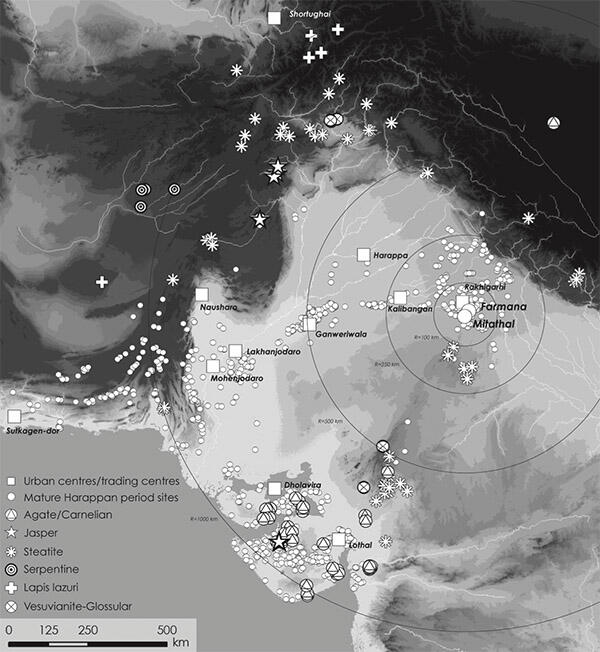The first in-depth look at stone beads from Indus sites besides Harappa, in this case two just south of Rakigarhi. Stone beads include those made of steatite (the vast majority, about 91%), carnelian (8%), as well as jasper, agate, lapis luzuli, limestone and more. Steatite and carnelian beads are found at levels corresponding to all time periods. Their importance to archaeologists lies in the fact that they typically require serious manufacturing expertise, leading to residues and debitage from the processes that turn them into something people value, and the raw materials used can come across long distances, casting light on the wide network of relationships that keep a larger civilization ticking. For example, about carnelian which seems to have largely been sourced from Gujarat during Indus times, the authors write:
"Based on the evidence from the bead workshops exposed at Kanmer in Gujarat (Endo et al. 2012), the production stages can be reconstructed starting from splitting nodules to make a blank (first stage), through preparing a roughout with a chipping technique (second stage), grinding to make smooth surface (third stage), to perforating a hole and finally polishing (fourth stage). The evidence from Farmana and Mitathal also demonstrate a similar production process of beads. However, a striking difference between Kanmer and these two sites in the Ghaggar plain is the size of beads produced. While the evidence from Kanmer clearly exhibits that long beads were remarkably produced at this site, which is located closer to sources of various stones in Gujarat, the evidence from Farmana and Mitathal clearly show that only smaller and shorter beads were manufactured. The remarkable difference in the amounts of roughouts and debitage at these sites also indicate that the bead production at Farmana and Mitathal was limited in scale compared to that at Kanmer. The absence of ernestite drills at Farmana and Mitathal may also reflect the limited bead production activities or the limited nature of activities" (p. 582).
This fine paper is full of carefully drawn diagrams, photographs of the types of beads, SEM (Scanning Electron Microscope) imagery, and detailed analysis. All of which reminds us, once again, how fine ancient Indus craftsmen were, the enormous efforts that went into making the tiniest of objects and, concomitantly, the great value these must have held for its inhabitants.
This essay is one of the many in the recent volume Walking with the Unicorn: Social Organization and Material Culture in Ancient South Asia: Jonathan Mark Kenoyer Felicitation Volume.
Image: Location of Farmana and Mitathal and the distributions of rocks (by the author)

